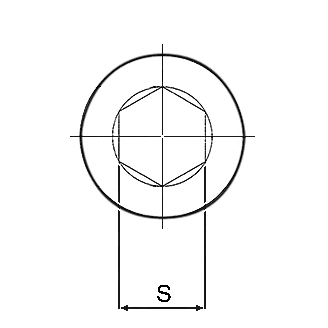Din Iso 2768-1 Die Tabelle 3
GENERAL TOLERANCES FOR LINEAR AND ANGULAR DIMENSIONS (DIN ISO 2768 T1). LINEAR DIMENSIONS: Tolerance class designation (description). Permissible deviations in mm for ranges in nominal lengths f (fine) m (medium) c (coarse) v (very coarse). - over 3 up to 6. Bei Nennmassen unter 0,5 mm sind die Grenzabmasse direkt am Nennmass anzugeben. And f of DIN ISO 2768-1 are identic with those of DIN.
This part of ISO 2766 is intended to simplify drawing indications and it specifies general tolerances for linear and angular dimensions without individual tolerance indications in four tolerance classes. NOTE 1 - The concepts behind the general tolerancing of linear and angular dimensions are described in annex A. It applies to the dimensions of parts that are produced by metal removal or parts that are formed from sheet metal. NOTES 2 These tolerances may be suitable for use with materials other than metal. 3 Parallel International Standards exist or are planned, e.g. See ISO 8962 1) for castings. This part of ISO 2768 only applies for the following dimensions which do not have an individual tolerance indication: a) linear dimensions (e.g.

External sizes, internal sizes, step sizes, diameters, radii, distances, external radii and chamfer heights for broken edges); b) angular dimensions, including angular dimensions usually not indicated, e.g. Right angles (90°), unless ref- erence to IS0 2768-2 is made, or angles of uniform polygons; c) linear and angular dimensions produced by machining assembled parts. It does not apply for the following dimensions: a) linear and angular dimensions which are covered by reference to other standards on general tolerances; b) auxiliary dimensions indicated in brackets; c) theoretically exact dimensions indicated in rectangular frames.
1) ISO 8062: 1994, Castings — System of dimensional tolerances.
This part of ISO 2766 is intended to simplify drawing indications and it specifies general tolerances for linear and angular dimensions without individual tolerance indications in four tolerance classes. NOTE 1 - The concepts behind the general tolerancing of linear and angular dimensions are described in annex A. It applies to the dimensions of parts that are produced by metal removal or parts that are formed from sheet metal. NOTES 2 These tolerances may be suitable for use with materials other than metal. 3 Parallel International Standards exist or are planned, e.g. See ISO 8962 1) for castings.
I just opened material libraries (3dsmax.mat) from 2008, 9, 8. How to use material library of 3ds max 9 into 3ds Max Design 2009? Get an Activation Code. Free Download Material Library 3Ds Max 9 System. Lumion 7.3 Pro Crack + Serial Key Full Version. Lumion 7 Crack is awesome and software that is the wonderful designer. Free V- Ray Tools - VRay. Create photo- realistic renders and learn V- Ray like a real DSLR camera. The basics to advanced, the 5- Step Render Workflow (5. 

Din Iso 2768-1
This part of ISO 2768 only applies for the following dimensions which do not have an individual tolerance indication: a) linear dimensions (e.g. External sizes, internal sizes, step sizes, diameters, radii, distances, external radii and chamfer heights for broken edges); b) angular dimensions, including angular dimensions usually not indicated, e.g. Right angles (90°), unless ref- erence to IS0 2768-2 is made, or angles of uniform polygons; c) linear and angular dimensions produced by machining assembled parts. It does not apply for the following dimensions: a) linear and angular dimensions which are covered by reference to other standards on general tolerances; b) auxiliary dimensions indicated in brackets; c) theoretically exact dimensions indicated in rectangular frames. 1) ISO 8062: 1994, Castings — System of dimensional tolerances.